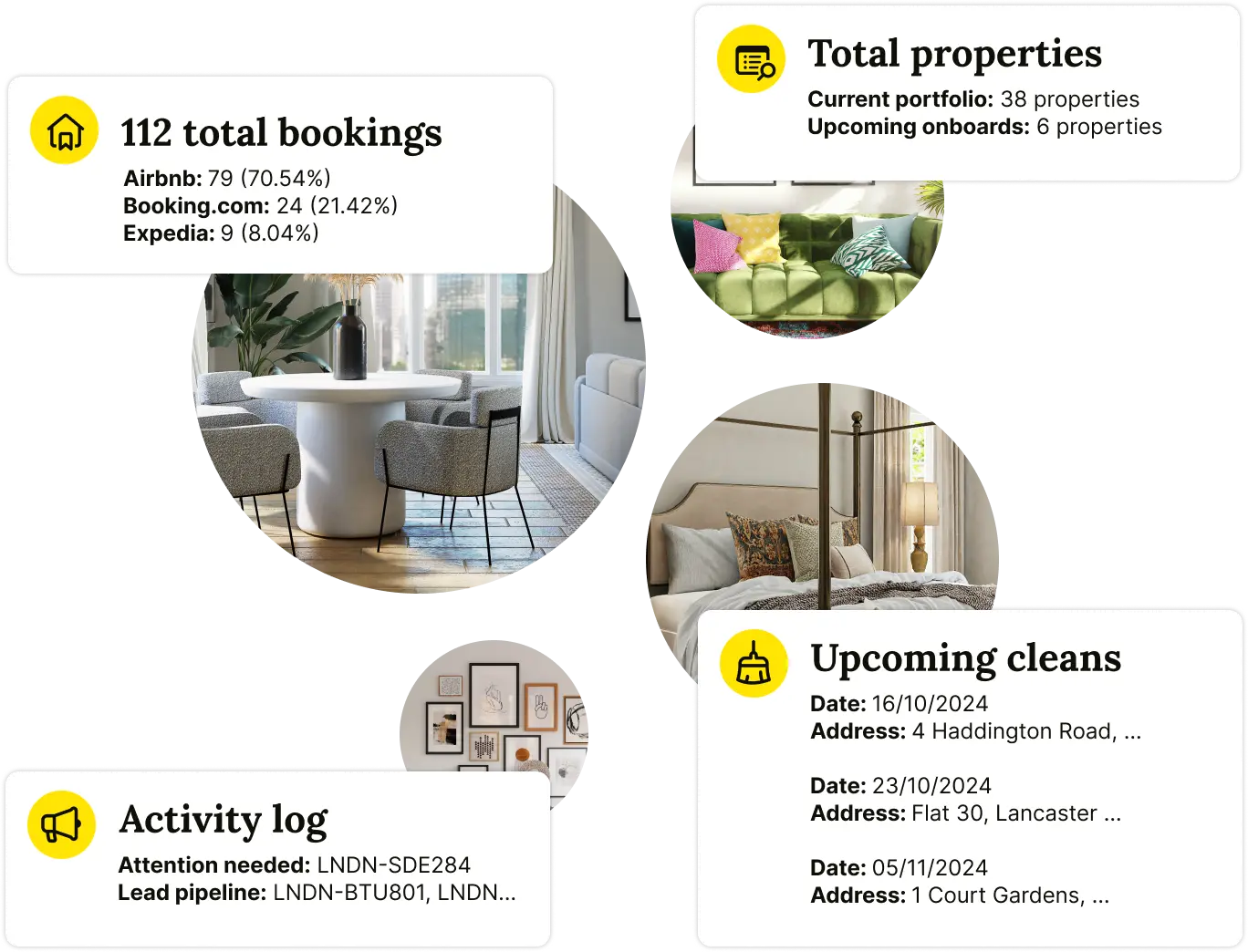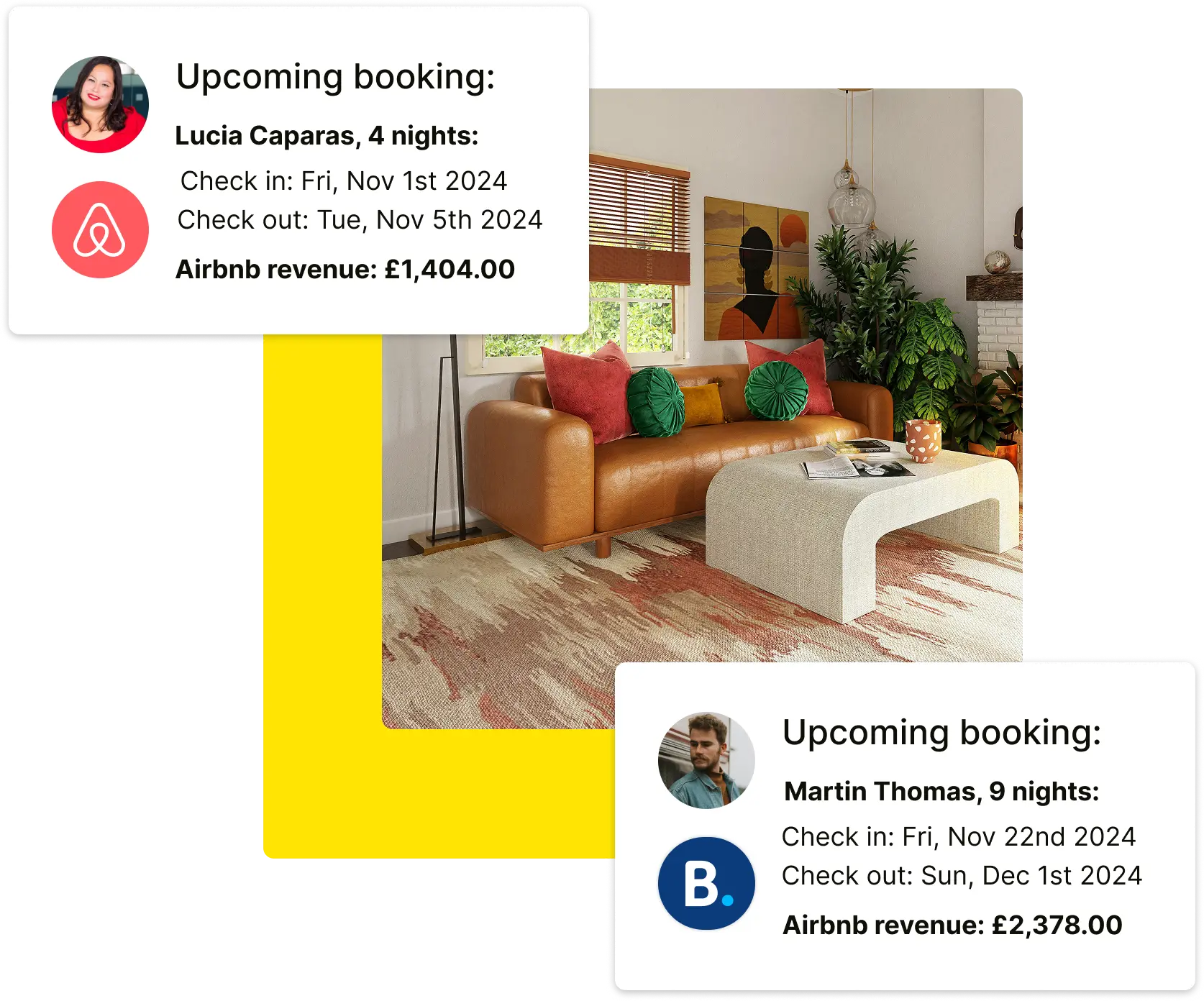The market for mid-term rentals is not just growing; it's really taking off! More and more digital nomads, remote workers, and students are looking for flexible housing options, driving this surge. Unlike traditional or short-term stays, mid-term rentals boast a solid average occupancy rate of around 51%.
Property owners and investors can maximise their rental income by meeting the changing needs of today's tenants. Whether it's a stylish city apartment or a cosy suburban house, there are many opportunities to explore, each promising great returns.
If you're intrigued by the potential of mid term lets and want to learn how to succeed in this booming market, this blog is for you!
Table of Contents
What are Mid-term Lets?
Mid-term rentals bridge the gap between short-term and long-term housing, typically spanning one to six months. Unlike holiday rentals, they offer stability without the year-long commitment of traditional leases.
Legally, mid-term rentals may sidestep the regulations that affect short-term lets, offering a simpler agreement than year-long contracts.
The Differences Between Short-Term, Mid-Term, and Long-Term Rentals
Short-Term Rental
Lease Length: 1 – 30 days.
Renters: Usually travellers and vacationers.
Mid-Term Rental
Lease Length: 1 – 12 months.
Renters: Individuals needing accommodation for longer than a month but prefer not to commit to a full year. Often, people are in transitional phases like relocations or temporary work assignments.
Long-Term Rental
Lease Length: 12 months and above.
Renters: Individuals settled in an area with long-term plans, typically beyond college age.
Types of Mid-term Rentals
Private Room Rentals
Private room rentals are perfect for those looking for affordable options or a shared living arrangement. Renting a private room in a larger property lets you enjoy communal areas while still having your own space.
Entire House or Apartment Rentals
Whole house or apartment rentals are ideal for individuals or families who want complete independence and privacy. Renting a whole house or apartment gives you a home away from home, where you can enjoy the space exclusively during your stay.
Serviced Apartments
Serviced apartments combine the comforts of home with a hotel-like experience, offering fully furnished accommodations and amenities.
Shared Accommodations
Shared accommodations are designed for those who prefer a communal living experience. Tenants rent a portion of a property while sharing common spaces such as the kitchen or living room with other residents.
Corporate Housing
Corporate housing caters specifically to business travellers, digital nomads, or professionals on assignment by providing fully furnished apartments that include utilities. These rentals offer a convenient and comfortable solution for extended business stays.
Vacation Rentals
Vacation rentals are perfect for those looking for a temporary getaway. They offer unique properties such as cottages, villas, or cabins, often with special features, situated in scenic or tourist-friendly locations.
Benefits of Mid Term Lets
Rising Demand Across Diverse Renter Demographics
The surging popularity of rental properties, bolstered by platforms like Airbnb, ensures consistent occupancy and appeals to a diverse range of tenants.
Attracting Reliable Tenants
Mid-term renters often consist of responsible professionals seeking medium-term stays, favouring fully furnished accommodations in college towns or new cities. These tenants are likely to maintain the property well, minimising the need for frequent repairs and upkeep.
Blend of Stability and Flexibility
These rentals provide a distinctive balance of stability and adaptability. Featuring options such as month-to-month leases, they cater perfectly to the needs of college students and professionals on temporary assignments.
Fewer Turnover Costs
Mid-term leases typically incur lower turnover costs compared to short-term rentals. They require less frequent cleaning and maintenance, making them more efficient, especially in high-demand rental markets.
Customised Lease Agreements
Lease agreements for mid-term rentals are crafted to meet the specific needs of medium-term tenants. This tailored approach ensures clarity and mutual agreement on terms, promoting a transparent and mutually beneficial relationship between landlords and tenants.
Stability Without Long-Term Commitment
Mid-term rentals provide the advantages of long-term tenants without a lengthy commitment. This setup benefits both landlords and tenants by offering security and consistency for the owner while allowing flexibility for the tenant.
Cons of Mid Term Lets
Finding Suitable Tenants
Finding suitable mid-term tenants can be more challenging than short-term or long-term rental properties. The target audience for medium-term rentals is more specific and smaller than those seeking either short stays or extended leases.
Lower Income Potential Compared to Short-Term Rentals
While advantageous in many ways, mid-term rentals generally yield less income per unit than short-term options. Short-term accommodations often command higher rates due to frequent turnover.
Income Stability
Unlike long-term rentals that offer steady income streams with less turnover, mid-term rentals may not provide the same level of income stability. Due to their intermediate duration, mid-term leases can experience more frequent tenant turnover, potentially leading to income gaps between leases.
Furnishing and Maintenance Considerations
Unlike long-term housing, which tenants often furnish themselves for extended stays, mid-term rentals typically come fully furnished. This requires landlords to cover the costs of furnishing and maintaining the property, including appliances and essential household items.
Lease Agreement Complexity
Creating a lease agreement for mid-term rentals demands careful consideration. Landlords must accommodate the specific needs of tenants who value flexibility while safeguarding both parties' legal and financial interests.
Mid-Term Rentals Guide for Landlords
Listing Your Property
When listing your property on mid-term rental websites, highlight its unique features, amenities, location advantages, and any special considerations. This helps attract potential tenants looking for specific benefits.
Use Rental Platforms Effectively
To effectively manage your property, it's important to understand how different rental platforms work. Each platform has its own rules and appeals to different types of renters. Use professional photos, provide detailed descriptions, and respond quickly to inquiries to make your property stand out. Keep your listings current to attract more potential tenants and maximise visibility on these platforms.
Create a Comprehensive Mid-Term Rental Lease Agreement
A good mid-term rental lease should clearly explain what is expected by both the tenant and the landlord. This includes details about the rental cost and who is responsible for maintenance. It should also cover important legal information, such as security deposits, eviction procedures, and tenant rights, as required by local laws.
Manage Mid-Term Rentals Effectively
Managing mid-term rentals effectively requires clear communication with tenants from the start. Setting expectations by explaining property rules, maintenance procedures, and how to contact for issues helps establish a positive relationship. Addressing tenant concerns promptly and providing easy channels for reporting ensures trust and satisfaction.
For property maintenance, regular inspections help identify issues early, and maintaining a reliable network of service providers ensures quick responses to repairs.
Maximise Returns on Mid-Term Rentals
To increase returns on mid-term rentals, adjust lease terms to match current trends, such as accommodating remote work and allowing pets. This makes your property more attractive to potential tenants.
Consider providing extra services like cleaning, Wi-Fi, or concierge options to stand out in the mid-term rental market. These services enhance tenant satisfaction and help boost rental returns.
Conclusion
Managing mid-term rentals as a property owner or manager is quite different from traditional renting. Success depends on handling tenant turnover well and maintaining the property carefully. Balancing flexibility, attracting good tenants, and managing increased responsibilities are key challenges. Houst, a top management company for mid term lets, can help streamline and enhance your rental operations.
🚀 Start & Scale Your Airbnb Business with Houst
Launch a profitable Airbnb business — without owning property.
Join Houst’s Airbnb Business Partnership Program to start, manage, and grow your short-term rental business. With expert marketing, automation tools, and dynamic pricing strategies, we help you maximize earnings and scale faster.

⭐ Rated 4.8/5 by 2,500+ Hosts

🚀 Build a Thriving Airbnb Business with Houst
Monetize short-term rentals without owning property. Our Airbnb Business Partnership Program helps you start, scale, and automate a profitable Airbnb business with smart pricing, automation, and expert support.
💡 No Property Needed
📈 Expert Growth Strategies
🤖 Automated Hosting Tools

⭐ Rated 4.8/5 by 2,500+ Hosts

🚀 Build & Grow Your Airbnb Business with Houst
Turn your expertise into a profitable Airbnb business — without owning property.
Join Houst’s Airbnb Business Partnership Program to start, manage, and scale with ease. Get expert support, automation tools, and smart pricing strategies to maximize earnings and grow faster.

⭐ Rated 4.8/5 by 2,500+ Hosts



.webp)
.webp)







.png)

.webp)
